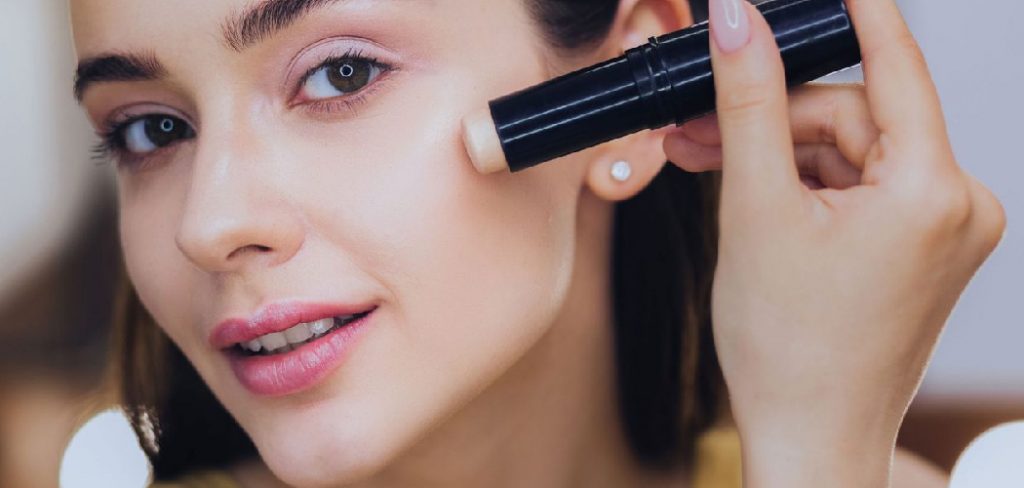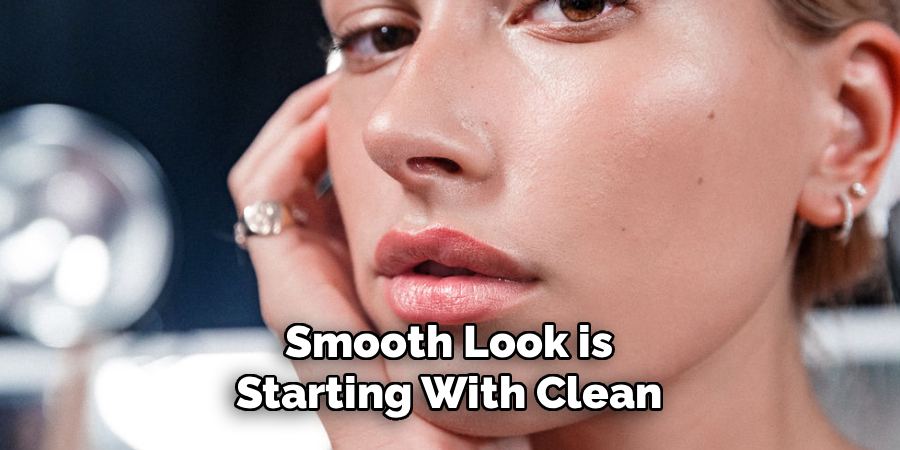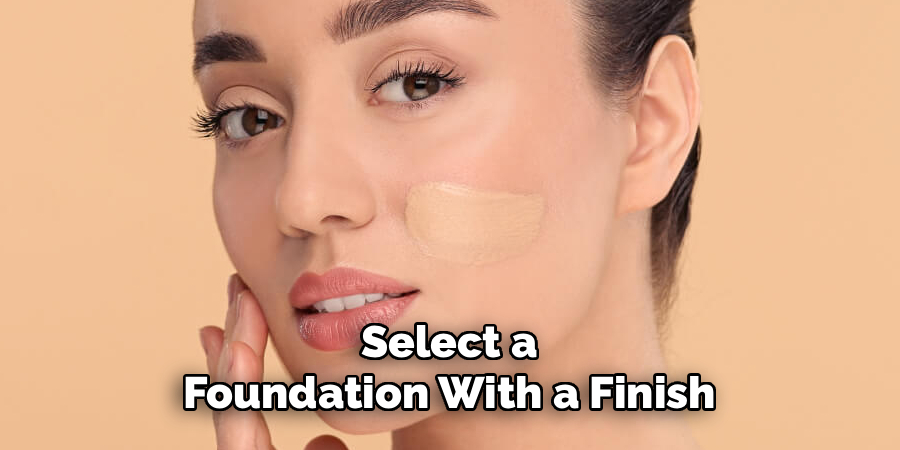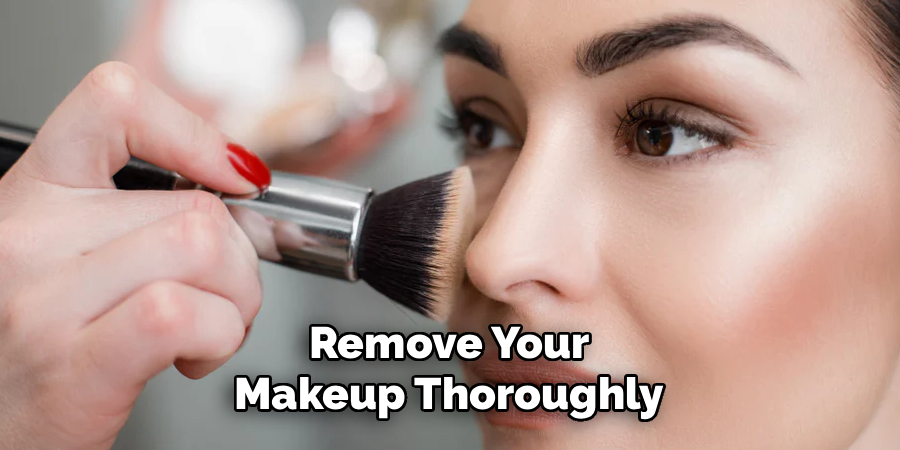A flawless, smooth complexion is often the foundation of any stunning makeup look. With the right techniques and products, it’s possible to blur imperfections and create a seamless finish that looks naturally radiant.

In this guide on how to make skin look smooth with makeup, you’ll learn how to make your skin look smooth with makeup—even if you’re dealing with texture, pores, or occasional blemishes. Whether you’re prepping for a big event or just want everyday perfection, these tips will help you achieve your best skin yet.
Tools and Materials You’ll Need
- Gentle Facial Cleanser and Lightweight Moisturizer
- Primer Suited to Your Skin Type
- High-quality Foundation (Liquid, Cream, or Powder)
- Concealer
- Setting Powder or Spray
- Makeup Brushes, Blending Sponge, and Powder Puff
- Exfoliating Scrub or Mask (for Prep)
- Optional: Color Corrector and Illuminating Products
7 Step-by-step Guidelines on How to Make Skin Look Smooth With Makeup
Step 1: Begin With a Clean, Moisturized Base
The first step to a smooth look is starting with clean, hydrated skin. Wash your face with a gentle cleanser suited to your skin type, then pat dry with a clean towel. Follow up by applying a lightweight moisturizer and give it time to absorb fully.

This base ensures your makeup will apply smoothly and helps prevent dry spots or uneven texture from showing through your foundation. Skipping this step can make even the best products look cakey, so never underestimate the power of proper skin prep.
Step 2: Exfoliate to Remove Dead Skin Cells
Before you begin makeup application, exfoliate your skin using a gentle scrub or mask. This process removes dead skin cells, reducing dullness and helping your foundation glide on more evenly.
Exfoliating one to two times a week is usually enough for most skin types. Over-exfoliating can irritate your skin, so always listen to what your skin needs and adjust your routine if necessary.
Step 3: Prime for Lasting Smoothness
Apply a primer designed for your skin’s needs. Mattifying primers help control oil and minimize pores, while hydrating primers can smooth and plump dry areas. Focus on applying primer in areas where makeup tends to settle, like pores around the nose and cheeks.
Primers create a barrier between your skin and foundation, extending wear time and helping your base look flawless for longer. Let the primer set for a minute or two before moving on to the next step.
Step 4: Choose and Apply Foundation Wisely

Select a foundation with a finish that suits your desired look—matte for oil control or dewy for a fresh glow. Use a damp makeup sponge or a brush to gently blend foundation into the skin, starting at the center of your face and working outward.
Take your time blending, as rushing can leave streaks or uneven patches. Buildable formulas allow you to add coverage where needed without over-applying product everywhere.
Step 5: Conceal Only Where Necessary
Dab concealer onto areas that need additional coverage, such as blemishes, under-eye circles, or redness. Use a small brush or your ring finger for precise blending, tapping gently to merge the concealer with your foundation.
Too much concealer can highlight rather than hide imperfections, so be strategic. Blend the edges well and opt for a lightweight formula that won’t settle into fine lines.
Step 6: Set Your Makeup to Prevent Creasing
To lock in your smooth finish, dust a fine layer of setting powder over areas prone to shine or creasing, like the T-zone and under the eyes. If you prefer a dewy look, setting spray can provide hold without excess mattification.
Setting your makeup keeps everything in place and controls oil throughout the day. Always use a light hand to avoid making your skin look dry or cakey.
Step 7: Add Finishing Touches for a Natural Glow
After your base is set, add blush, bronzer, or highlighter as desired. Blending these products well will enhance your natural features without drawing attention to texture.
If necessary, go over the final look with a clean, damp sponge to gently blend any visible edges. The finishing touches can make a huge difference in how natural and radiant your skin appears.
Following these steps on how to make skin look smooth with makeup will help you achieve a flawless and natural-looking complexion. Remember, it’s all about finding the right products and techniques that work best for your skin type and desired look. With practice and experimentation, you can perfect your makeup routine and confidently rock smooth skin every day. Keep in mind to always remove your makeup before going to bed to allow your skin to breathe and avoid clogging pores.
Additional Tips
- Always remove your makeup thoroughly at the end of the day to keep your skin clear and healthy.
- Switch up your products seasonally, as your skin’s needs can change with the weather.
- Avoid using too much product; thin layers are easier to blend and look more skin-like.
- Clean your brushes and sponges regularly to prevent breakouts and patchy application.
- Drink plenty of water to keep your skin hydrated from within, which improves any makeup.
- Try incorporating a hydrating mask once a week for extra smoothness.
Common Mistakes to Avoid
- Applying foundation to unwashed or unmoisturized skin.
- Using the wrong shade or formula for your skin type.
- Over-applying powder can emphasize pores and fine lines.
- Neglecting to blend products properly.
- Skipping primer or exfoliation results in a less smooth finish.

Do You Need To Use Professionals?
While makeup artists have expert skills and a vast selection of products, you don’t need to hire a professional to achieve smooth-looking skin. With practice and the right tools, anyone can master these steps at home. Professionals can be helpful for special occasions, like weddings or photoshoots, where long-lasting, flawless results are essential.
If you struggle with specific skin concerns, consulting a professional for advice or a lesson can be valuable. They can recommend products, techniques, or even skincare changes to help you reach your goals. Ultimately, though, practice and patience are key.
How Much Will It Cost?
The cost of achieving smooth skin with makeup can vary widely. At a minimum, you’ll need a good cleanser, moisturizer, foundation, concealer, primer, and tools, which can be found at both drugstore and high-end price points. Expect to spend anywhere from $50 to $200 for a complete beginner’s set.
Investing in higher-quality foundations and brushes often yields better results, but many drugstore options work beautifully. Don’t feel pressured to buy everything at once—start with basics and add products as you discover what works for your skin. Remember, technique matters as much as the products themselves.
Frequently Asked Questions
Q1: How Can I Stop My Makeup From Looking Cakey?
Making sure you prep your skin properly with moisturizer and primer is crucial. Use thin layers of foundation and build coverage only where you need it. Applying too much product at once can cause the dreaded cakey look, so blend well and set your makeup lightly.
Regularly cleaning your makeup tools and exfoliating your skin also helps prevent product buildup. Choose formulas that suit your skin type for the best results.
Q2: Are There Any Special Techniques for Mature Skin?
Yes, for mature skin, focusing on hydration and light, luminous products is best. Heavy powders can settle into fine lines, so opt for creamier textures. Blending is especially important to achieve a seamless look.
A good hydrating primer or a drop of facial oil in your foundation can also add radiance. Pay attention to the delicate under-eye area, using lightweight, non-drying concealers.
Q3: What Foundation Is Best for Textured Skin?
Look for lightweight, buildable formulas that don’t cling to texture. Liquid and cream foundations often perform better than powder ones for this purpose. Always use a primer first to smooth the surface as much as possible.
If you have visible pores or acne scars, foundations with a blurring or smoothing effect can help. Be patient—finding the perfect foundation might take a little trial and error.
Q4: Can I Make My Skin Look Smooth Without Foundation?
Yes! You can use a tinted moisturizer, BB cream, or simply focus on well-blended concealer for a more natural look. Skincare is just as important—regular cleansing, exfoliation, and hydration improve your skin’s texture underneath any makeup.

For a quick fix, a good primer or setting spray can also blur minor imperfections. Ultimately, the healthier your skin, the smoother your makeup will look.
Conclusion
Achieving smooth, flawless-looking skin with makeup is all about preparation, the right products, and mindful technique. While it takes a little effort, the confidence boost is well worth it. Try experimenting with different methods outlined in this guide on how to make skin look smooth with makeup to discover what makes your skin look and feel its best.
Remember, perfect skin isn’t always the goal—embracing your natural features and enhancing them is what truly makes you shine.
About the Author
Jane Hubbard is a passionate beauty expert with a wealth of experience in makeup, hair, and overall beauty techniques. After years of working as a hairdresser specialist, she followed her entrepreneurial spirit and started her own consultancy business.
Jane has always been driven by her desire to help others feel confident in their own skin, and she does this by sharing her knowledge, experiences, and practical beauty tips. Through her consultancy, she empowers individuals to embrace their unique beauty, offering tailored guidance that boosts both self-esteem and personal style.
Professional Focus
- Specializes in makeup, hairstyling, and beauty consulting.
- Provides personalized beauty advice, tips, and techniques to help individuals feel confident in their appearance.
- Dedicated to staying up-to-date with the latest industry trends and developments.
- Passionate about creating a comfortable and empowering experience for every client.
Education History
- University of Craft and Design – Bachelor of Fine Arts (BFA) in Woodworking and Furniture Design
- Woodworking Apprenticeships – Extensive hands-on training with skilled craftsmen to refine carpentry and furniture making techniques
- Online Courses & Masterclasses – Continued education in advanced woodworking techniques, design principles, and specialized tools
Expertise:
- Makeup artistry, hairstyling, and beauty consulting.
- Personalized beauty techniques to enhance confidence and self-expression.
- Educating clients on how to maintain their beauty routines at home.
